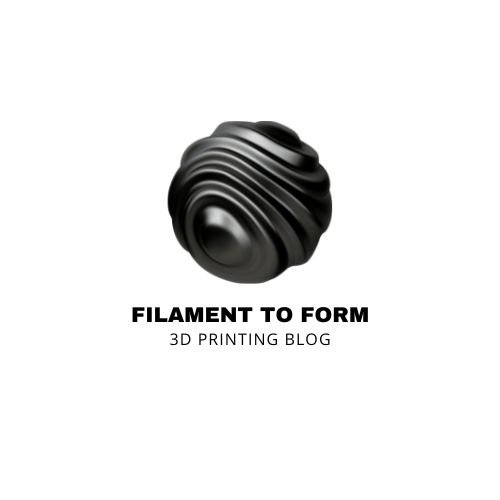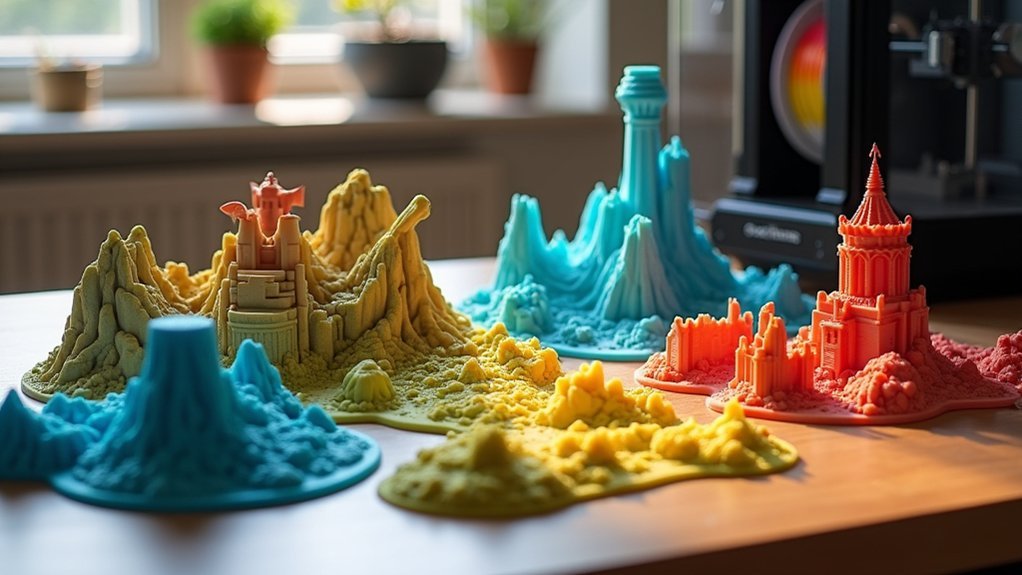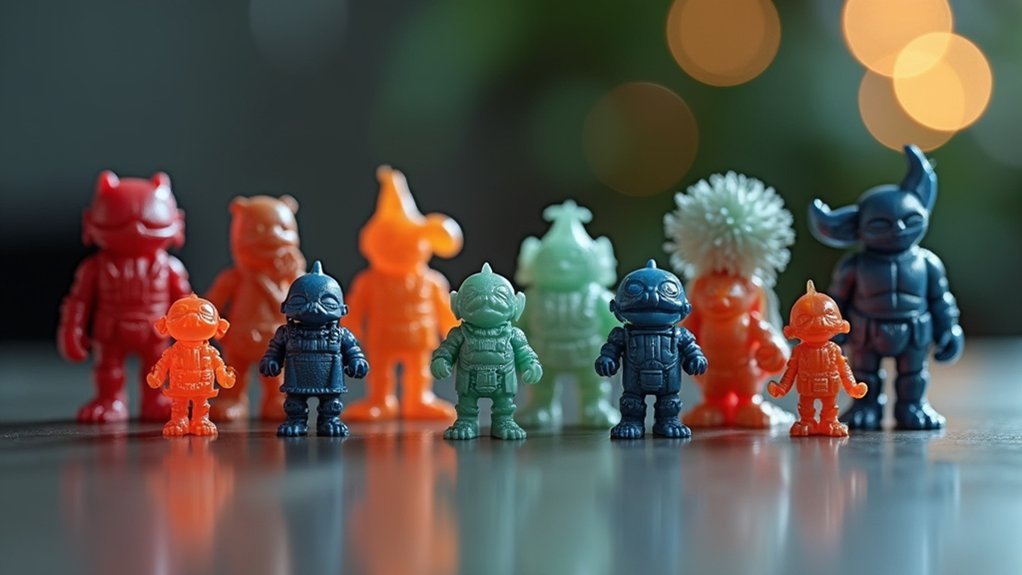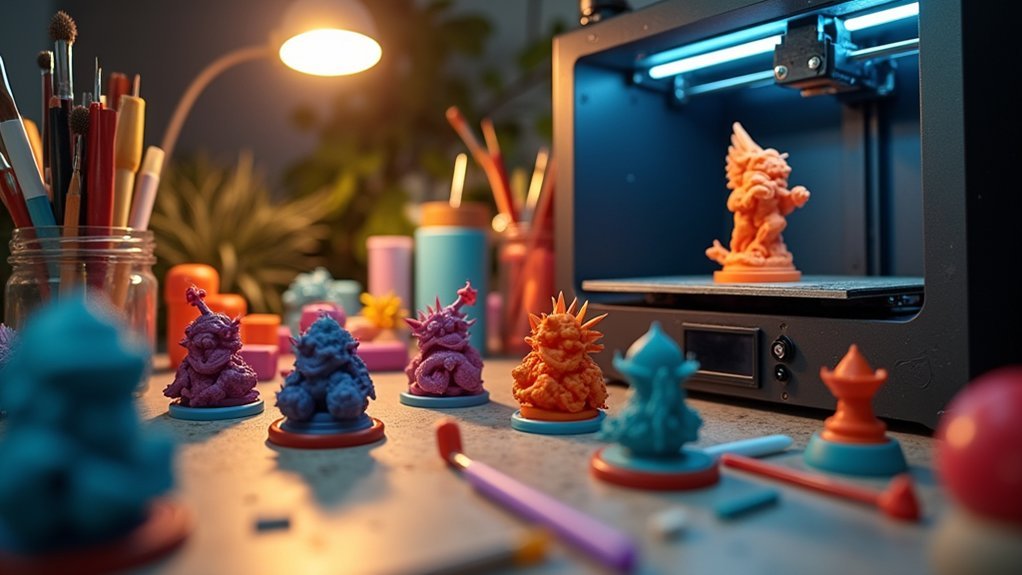You’re probably wondering if those 3D-printed kitchen tools you’ve been eyeing are actually safe for food contact. The truth is, not all filaments meet FDA standards, and using the wrong materials could put your family’s health at risk. While standard PLA might work for decorative items, kitchen creations demand specialized food-grade materials with proper certifications. The difference between safe and unsafe options isn’t always obvious, but five specific filaments stand out from the crowd.
YXPOLYER PLA+ Food Safe 3D Printing Filament 1.75mm (Orange)
If you’re seeking a reliable food-safe filament that doesn’t compromise on performance, YXPOLYER PLA+ delivers FDA-compliant printing with fracture toughness up to five times greater than standard PLA. This 1.75mm orange filament excels at high-speed printing with temperatures of 220°C and bed settings at 35°C, achieving 98% extrusion rates and maximum volumetric speeds of 21mm³/s. You’ll appreciate its compatibility with most FDM printers, including Bambu Lab models, while vacuum-sealed packaging guarantees clog-free, bubble-free results. Perfect for kitchen utensils, home goods, and skin-contact products requiring food-grade safety standards.
Best For: Makers who need FDA-compliant filament for kitchen utensils, home goods, and skin-contact products while requiring enhanced durability and high-speed printing capabilities.
Pros:
- FDA food-grade certified with fracture toughness up to 5x stronger than standard PLA
- Optimized for high-speed printing with 98% extrusion rate and maximum volumetric speed of 21mm³/s
- Vacuum-sealed packaging ensures clog-free, bubble-free printing with broad FDM printer compatibility
Cons:
- Higher printing temperature requirement (220°C) compared to standard PLA filaments
- Limited to single orange color option for this specific food-safe variant
- Premium pricing typical of specialized food-grade 3D printing materials
Gizmo Dorks 1.75mm Acetal Delrin Filament for 3D Printers (White)
Gizmo Dorks’ 1.75mm Acetal Delrin Filament delivers exceptional strength and wear resistance that makes it perfect for engineers and makers who need food-safe components capable of withstanding high stress and repeated use. You’ll appreciate its incredible durability – printed parts resist damage and recover from deformation. However, you’ll face printing challenges including warping and bed adhesion issues. Use an enclosed printer with heated bed at 110°C and extrusion temperatures between 210-220°C. Blue painter’s tape or wood platforms work best for adhesion. Always print in well-ventilated areas since overheating releases formaldehyde.
Best For: Engineers, makers, and 3D printing enthusiasts who need to create durable, food-safe components like gears, bushings, and impact parts that can withstand high stress and repeated use.
Pros:
- Exceptional strength and durability with high impact resistance, wear resistance, and ability to recover from deformation
- Food-safe material with excellent chemical resistance and dimensional stability for functional applications
- Superior mechanical properties including high stiffness and low friction, making it ideal for mechanical components like gear wheels and bushings
Cons:
- Challenging to print due to warping issues and poor bed adhesion, requiring an enclosed printer with heated bed and specialized surfaces
- Safety concerns as the material releases formaldehyde when overheated, requiring well-ventilated printing areas
- Limited printing speed (30mm/s) and strict temperature requirements that make it less beginner-friendly than standard filaments
YXPOLYER PLA+ Food Safe 3D Printing Filament 1.75mm (Yellow)
You’ll find YXPOLYER PLA+ Food Safe 3D Printing Filament stands out as the top choice for creators who need five times the fracture toughness of standard PLA without compromising food safety. This FDA-compliant filament meets food-grade standards through SGS laboratory testing, making it perfect for kitchen utensils and food-contact items.
The 1.75mm yellow filament delivers exceptional performance with optimized high-speed printing at 220°C. You’ll appreciate its clog-free technology and vacuum-sealed packaging that prevents moisture damage. Compatible with most FDM printers including Bambu Lab systems, it’s ideal for prototyping educational models and home goods requiring direct skin contact.
Best For: Creators who need food-safe 3D printing filament with superior strength for kitchen utensils, food-contact items, and home goods requiring enhanced durability and safety standards.
Pros:
- Five times the fracture toughness of standard PLA with FDA food-grade compliance and SGS laboratory testing certification
- Optimized for high-speed printing with clog-free technology and vacuum-sealed moisture protection
- Wide compatibility with most FDM printers including Bambu Lab systems and AMS technology
Cons:
- Higher printing temperature requirement of 220°C may not be suitable for all entry-level 3D printers
- Limited to single yellow color option which may not meet all project aesthetic needs
- Premium food-safe features likely come at a higher cost compared to standard PLA filaments
Certified Food Grade PETG 3D Printer Filament by Comfy Materials (1.75mm, 1kg, White)
Makers seeking genuine food-grade certification for their 3D printing projects will find Comfy Materials’ PETG filament stands apart with its dual TÜV SÜD and SGS certifications plus FDA 21 CFR 177.1630 compliance. You’ll appreciate the Eastman GN071 copolyester construction that’s BPA-free and GREENGUARD certified. The filament maintains exceptional dimensional accuracy at +/- 0.02mm while delivering strong mechanical properties including 50 MPa tensile strength. You’ll need stainless steel nozzles and all-metal hot ends to maintain food safety. Print temperatures range from 220°C to 260°C, and the vacuum packaging with desiccant guarantees ideal filament condition.
Best For: Makers who need genuine food-grade certified filament for printing kitchen utensils, food containers, or other items that will come into direct contact with food and require FDA compliance.
Pros:
- Triple certification (TÜV SÜD, SGS, and FDA 21 CFR 177.1630) ensures genuine food-grade safety for direct food contact applications
- Exceptional dimensional accuracy of +/- 0.02mm and strong mechanical properties (50 MPa tensile strength) deliver reliable, high-quality prints
- Made from premium Eastman GN071 copolyester that’s BPA-free, low odor, and GREENGUARD certified for safer printing environments
Cons:
- Requires specific hardware upgrades (stainless steel nozzles and all-metal hot ends) to maintain food safety during printing
- Higher printing temperature requirements (220°C-260°C) may not be compatible with all entry-level 3D printers
- Some customer feedback indicates occasional issues with packaging quality and filament condition upon delivery
Certified Food Grade PLA+ 3D Printer Filament by Comfy Materials (1.75mm, 1kg)
When you need certified food-grade filament that won’t compromise on print quality, Comfy Materials’ PLA+ delivers dual TÜV SÜD and SGS certifications alongside FDA compliance for 21 CFR 175.300. This eco-friendly filament’s made from REVODE110 plant-based resin and maintains impressive 35 MPa tensile strength with precise 1.75mm diameter accuracy.
You’ll get reliable prints at 190-220°C extrusion temperatures across most FDM printers like Ender 3 and Prusa i3. For true food safety, you must use dedicated stainless steel nozzles and all-metal hot ends to prevent contamination from brass components. The vacuum packaging includes desiccant for ideal storage conditions.
Best For: 3D printing enthusiasts and professionals who need to create food-safe items like kitchen utensils, containers, or dining accessories with reliable mechanical properties and certified safety standards.
Pros:
- Triple certification from TÜV SÜD, SGS, and FDA compliance ensures genuine food safety for direct food contact applications
- Strong mechanical properties with 35 MPa tensile strength and precise ±0.02mm diameter accuracy for consistent, durable prints
- Wide printer compatibility and eco-friendly plant-based composition with vacuum packaging for optimal storage
Cons:
- Requires investment in dedicated stainless steel nozzles and all-metal hot ends to maintain food safety standards
- Higher cost compared to standard PLA filaments due to specialized certifications and materials
- Limited temperature resistance with deflection at only 61.5°C, restricting use with hot foods or dishwasher cleaning
Factors to Consider When Choosing Food-Safe 3D Printing Filaments and Equipment
When selecting food-safe 3D printing filaments and equipment, you’ll need to verify that materials have proper safety certifications like FDA approval or food-grade compliance. Your printer’s hardware compatibility and temperature capabilities must align with the filament’s processing requirements to guarantee safe, quality results. You should also evaluate the material’s chemical resistance properties and understand what post-processing steps are necessary to maintain food safety standards.
Material Safety Certifications
Certifications from recognized testing organizations serve as your primary safeguard when selecting food-safe 3D printing filaments. You’ll want to look for materials certified by reputable organizations like TÜV SÜD or SGS that confirm compliance with FDA safety standards for food contact applications.
Pay close attention to specific FDA regulation compliance, such as FDA 21 CFR 177.1630 for PETG filaments or FDA 21 CFR 175.300 for PLA materials. These certifications indicate the filament’s suitability for food-related applications and guarantee you’re meeting necessary safety requirements.
Additionally, verify that certified filaments are BPA-free and exhibit low odor characteristics, as these factors directly impact the safety of printed items that’ll contact food. Proper certification eliminates guesswork and provides confidence in your material selection.
Printer Hardware Compatibility
Beyond selecting certified materials, your 3D printer’s hardware specifications directly determine which food-safe filaments you can successfully use. You’ll need compatibility with 1.75mm filament diameter, as most food-safe options are produced in this standard size. Your printer must reach extrusion temperatures between 190°C and 260°C, depending on the specific material you’re using.
Check that your printer supports heated beds, since different filaments require specific bed temperatures—35°C for PLA and 110°C for POM—to prevent warping. You’ll also want consistent temperature control, particularly for warp-prone materials that benefit from enclosed printing environments.
Most importantly, guarantee your printer’s nozzle and hot end use stainless steel materials rather than brass to eliminate contamination risks in food-safe applications.
Temperature and Processing Requirements
Successfully printing with food-safe filaments requires precise temperature control throughout the entire process. You’ll need to set your extruder temperature between 190°C to 220°C for PLA+ filaments, while PETG requires higher temperatures ranging from 220°C to 260°C for ideal extrusion. Your heated bed settings vary considerably by material—PLA+ works well around 35°C, but materials like Acetal Delrin need approximately 110°C to prevent warping.
Maintaining consistent temperatures is essential for quality results. PETG and Acetal require bed temperatures between 102°C to 110°C for proper adhesion. You’ll also need adequate ventilation, especially when printing Acetal, which can release formaldehyde fumes if overheated. Additionally, make certain your filament maintains dimensional accuracy within +/- 0.02 mm to +/- 0.03 mm tolerance for smooth feeding.
Chemical Resistance Properties
When selecting food-safe 3D printing filaments, you’ll need to prioritize materials with exceptional chemical resistance to guarantee they won’t degrade or leach harmful substances when exposed to various foods and liquids. Polyoxymethylene (POM), also known as Acetal, stands out for its excellent chemical and heat resistance, making it ideal for food contact applications. Look for certified food-grade filaments like PETG and PLA+ that meet recognized safety standards. You should also choose BPA-free materials with low odor properties to minimize chemical exposure during printing. Pay attention to processing temperatures, as overheating can release toxic substances like formaldehyde from certain materials, compromising both safety and chemical resistance.
Post-Processing Food Safety
After completing the printing process, you’ll need to implement proper post-processing techniques to guarantee your food-safe items meet hygiene standards and maintain their safety properties. Start by sanding, polishing, or coating surfaces to reduce roughness that harbors bacteria. Clean all printed objects with food-safe sanitizers to eliminate contaminants from the printing process.
Apply food-safe sealants or coatings to protect against moisture absorption and enhance durability while maintaining food contact safety. You must avoid chemical cleaners that could leach into food—only use food-grade approved materials during post-processing. Finally, verify proper curing or drying of items to eliminate residual moisture or solvents, which prevents spoilage and promotes ideal food safety standards.
Frequently Asked Questions
Can I Put 3D Printed Food Containers in the Dishwasher?
You shouldn’t put most 3D printed food containers in dishwashers. High temperatures can warp or melt the plastic, and layer lines trap bacteria that dishwashing can’t remove, making them unsafe for food use.
How Long Do Food-Safe 3D Printed Items Last Before Replacement?
You’ll typically need to replace food-safe 3D printed items every 6-12 months with regular use. They’ll degrade faster if you’re frequently washing them in dishwashers or exposing them to high temperatures.
What Temperatures Can Food-Safe 3D Printed Utensils Withstand?
You’ll find most food-safe 3D printed utensils withstand temperatures up to 140-160°F before warping. Don’t use them with boiling water or in dishwashers, as they’ll deform and potentially release harmful chemicals.
Are There Specific Post-Processing Steps Required for Food Safety?
You’ll need to sand surfaces smooth to eliminate bacteria-hiding layer lines, then thoroughly clean with food-safe sanitizers. Some filaments require annealing or UV curing for complete polymerization and ideal safety.
Can 3D Printed Food Containers Be Used for Acidic Foods?
You shouldn’t use most 3D printed containers for acidic foods. Acids can leach chemicals from plastics and penetrate layer lines where bacteria hide. Choose FDA-approved materials and avoid prolonged contact with acidic substances.





Leave a Reply